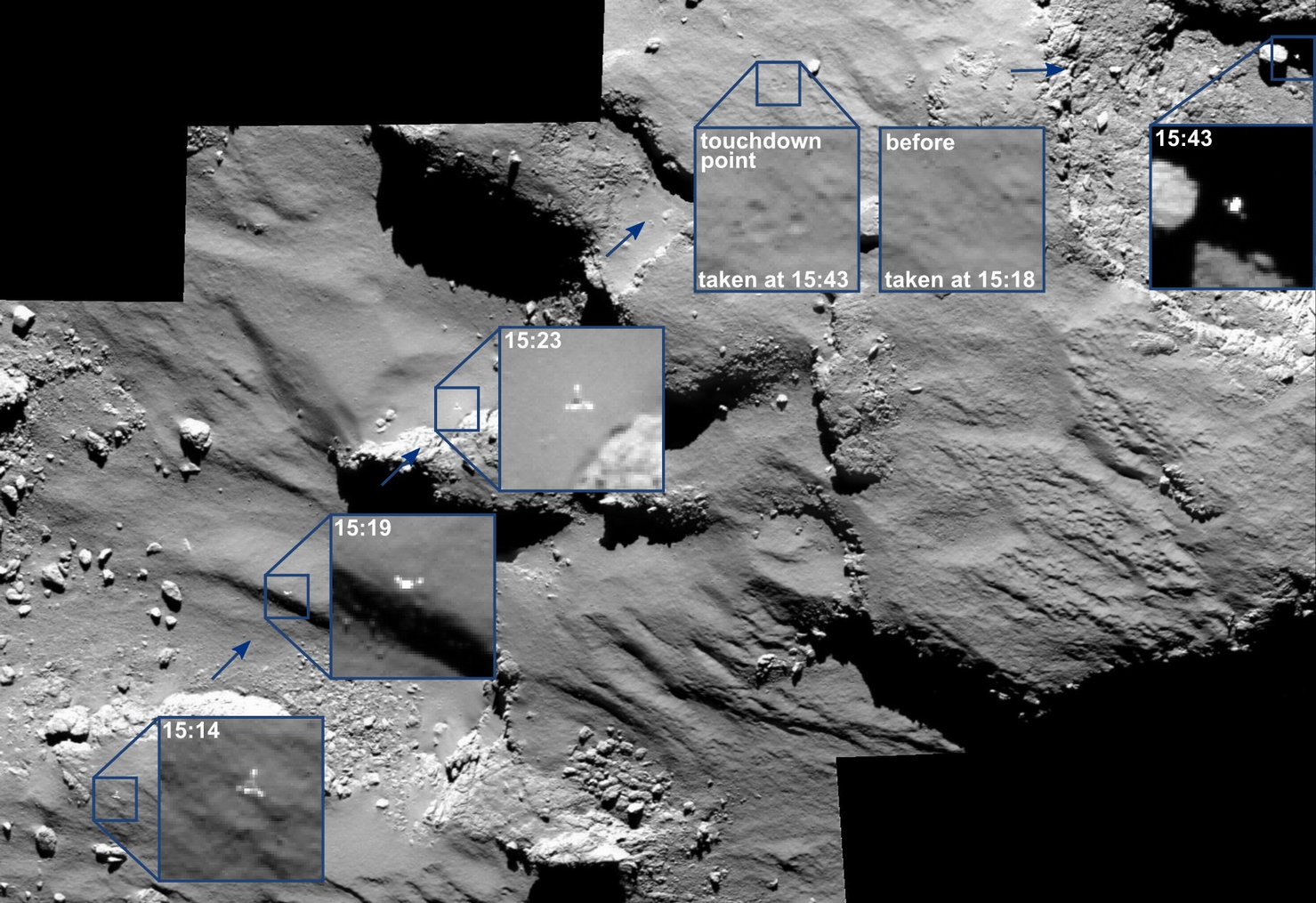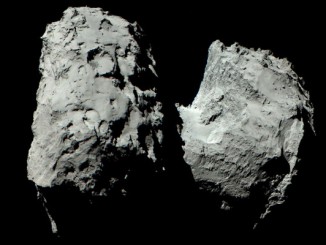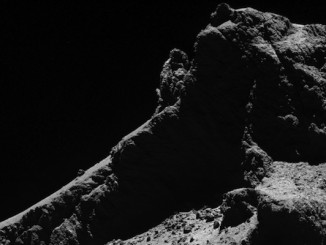
An amazing mosaic of images from Rosetta’s OSIRIS narrow-angle camera over a half-hour period show Philae’s perilous journey as it approached, then bounced, after its first touchdown on Comet 67P/Churyumov–Gerasimenko on 12th November 2014.
The timestamp on each magnified image insert is in Universal Time (~Greenwich Mean Time). A comparison of the touchdown area shortly before (15:18 UT) and after first contact clearly shows the disturbance created by the impact.
The images were captured when the spacecraft was initally 15.5 km from the comet’s surface at a resolution of 28 cm/pixel, the enlarged insets being 17 x 17 metres in size. Philae is moving across the comet from lower left to upper right as it descends to the surface.
The image taken at 15:43 UT, after touchdown, confirms that the lander’s trajectory changed to an easterly direction, moving at a speed of about 0.5 metres/second, as first suggested by data returned from the CONSERT experiment.
The bounce following touchdown carried Philae hundreds of metres above the comet before briefly making contact with the surface again about two hours later, finally spinning off into a dark, high-walled crater or at the base of a cliff.
The final location of Philae is still unknown, but the imaging team is confident that combining CONSERT ranging data with OSIRIS and navcam images from the orbiter, plus images near and on the surface from Philae’s ROLIS and CIVA cameras will soon reveal the lander’s final resting place.
Credit: ESA/Rosetta/MPS for OSIRIS Team MPS/UPD/LAM/IAA/SSO/INTA/UPM/DASP/IDA



